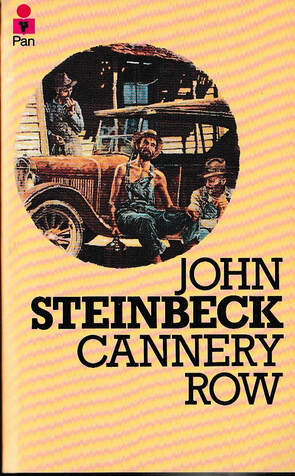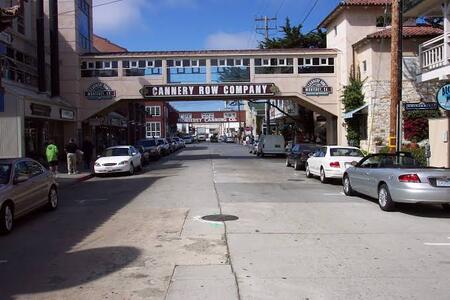
Cannery Row - Book Review and Book Club Discussion Questions
Goodreads Challenge
I am coming towards the end of my goodreads ‘reading challenge’. I pledged 50 books but have only read 42. Consequently I needed a slim book to read-how shallow I am! A dear friend and I had recently been chatting about John Steinbeck and he recommended Cannery Row to me. I adore Of Mice and Men (especially the very opening description) and have actually taught it more times than I’ve had hot dinners, so it made perfect sense to read this book. I’m so glad I did.
John Steinbeck’s Cannery Row – Opinion Piece
Cannery Row is a beautiful book guaranteed to encourage introspection and reflection on life. Set in the real Monterey Ocean View Avenue, fictionalized as Cannery Row, it is a study of identity. We learn about the individual characters and all their idiosyncrasies. From the generous hearted prostitutes, to the semi-lawless homeless, to the shrewd but semi-down-and-out businessman, we see into the soul of each character, as they come together to make the community of Cannery in the years of the great depression.
The structure of Cannery Row is linear and tells loosely inter-linked and intertwining stories that centre largely around the ecologist ‘Doc’. Fact and fiction overlap, (with only a quick look on Google, we learn that Doc is based on Steinbeck’s long standing friend Rickett.) There are separate episodes that occur during chapters that are featured between those comprising the main linear progression of the story. These ‘in-between chapters’ jar against the smoothness and the lull of the main text. The most poignant of the sub-stories, I think, is the story of two small boys where one knows the other’s father committed suicide with rat-poison and taunts him for this. The portrayal of the cruelty that people are capable of, even as children, and the need for one upmanship, in this chapter, is shocking.
Cannery Row is the type of book that needs savouring; each bite is worth lingering over. The final chapter of the successful party extensively quotes from the beautiful poem Black Marigolds, translated from the Sanskrit by E Powys Mathers. The reader finishes the text with a sensation rather like being served the finest delicacies in the poshest restaurant, knowing that it would be a sin to not linger over every mouthful. They are not likely to be exposed to such delicious delicacies again.

Explore how you respond to the criticism that John overly sentimentalizes hardship, suffering and poverty in Cannery Row.
Who is your favourite character in the book and why?
The groups of people who are perhaps presented most unsympathetically in Cannery Row are the ‘upstanding wives’ who don’t like the prostitutes. What do you think John Steinbeck is saying through his portrayal of them.
The creation of atmosphere is crucial in the understanding of the people who inhabit Cannery Row. As a group re-read the opening paragraph and discuss its significance in setting the scene and what you learn from it.

Cannery Row is only a slim book but over his lifetime, in one format or another Steinbeck keeps returning to it. Is there somewhere in your own life that you can’t let go or has helped you become the person you are today?
Doc’s friends first attempt at a holding a party for him is an unmitigated disaster. The guests are drunk and destroy his possessions and house. Tell us about a ‘special occasion’ or ‘party’ that has gone wrong.
Cannery Row relied extensively on the ‘canning’ industry, yet in the post-war era canning productivity fell dramatically. This is similar to the decline of other industries in recent times such as the steel industry in the North of England. Discuss the extent to which community is still built on a shared community work experience.
Cannery Row is a very slim novel, or even a novelette. Some of his other books are huge, e.g. Grapes of Wrath. Generally speaking do you prefer long or short books and why?
Some readers (not me) criticize Cannery Row on the grounds that nothing much really happens. What ingredient of a book do you think is essential for your enjoyment of it?

John Steinbeck's Cannery Row - Lasting Impression
Cannery Row has been criticized for being too nostalgic and sentimental. It is clear that the memories and associations of the place are central to John Steinbeck’s own life as he re-works the text several times in his life. If it is sentimental though, so be it as I absolutely loved it.